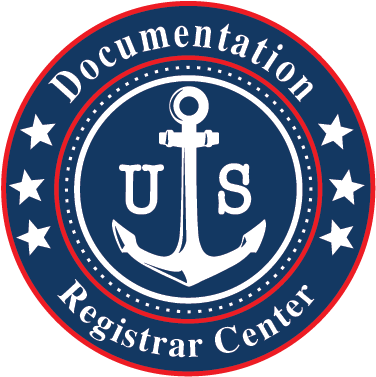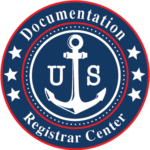183.51 Applicability.
This subpart applies to monohull boats less than 20 feet in length, except sailboats, canoes, kayaks, and inflatable boats, that are designed or intended to use one or more outboard motors for propulsion.
183.53 Horsepower capacity.
The maximum horsepower capacity marked on a boat must not exceed the horsepower capacity determined by the computation method discussed in paragraph (a) of this section, or for certain qualifying boats, the performance test method discussed in paragraph (b) of this section.
- The maximum horsepower capacity must be computed as follows:
-
-
- Compute a factor by multiplying the boat length in feet by the maximum transom width in feet excluding handles and other similar fittings, attachments, and extensions. If the boat does not have a full transom, the transom width is the broadest beam in the aftermost quarter length of the boat.
- Locate horsepower capacity corresponding to the factor in Table 183.53.
- For a boat with a factor over 52.5, if the horsepower capacity calculated in Table 183.53 is not an exact multiple of 5, it may be raised to the next exact multiple of 5.
- For flat bottom hard chine boats with a factor of 52 or less, the horsepower capacity must be reduced by one horsepower capacity increment in Table 183.53.
-
-
Table 183.53 – Outboard Boat Horsepower Capacity
[Compute: Factor = Boat Length × Transom Width]
| If factor (nearest integer) is | 0-35 | 36-39 | 40-42 | 43-45 | 46-52 |
| Horsepower Capacity is | 3 | 5 | 7.5 | 10 | 15 |
[Note: For flat bottom hard chine boats, with factor of 52 or less, reduce one capacity limit (e.g. 5 to 3)]
| If factor is over 52.5 and the boat has | Remote steering and at least 20? transom height | No remote steering, or less than 20? transom height | |
| For flat bottom hard chine boats | For other boats | ||
| Horsepower capacity is (raise to nearest multiple of 5) | (2 × Factor) – 90 | (0.5 × Factor) – 15 | (0.8 × Factor) – 25 |
- For boats qualifying under this paragraph, the performance test method described in this paragraph may be used to determine the horsepower capacity.
-
-
- Qualifying criteria.
-
- Thirteen feet or less in length;
- Remote wheel steering;
- Transom height
-
- Minimum 19 inch transom height; or,
- For boats with at least a 19 inch motorwell height, a minimum 15 inch transom height;
-
- Maximum persons capacity not over two persons;
-
- Boat preparation.
-
- The boat must be rigged with equipment recommended or provided by the boat and motor manufacturer and tested with the highest horsepower production powerplant for which the boat is to be rated, not to exceed 40 horsepower.
- Standard equipment must be installed in accordance with manufacturers’ instructions.
- The lowest ratio (quickest) steering system offered on the boat model being tested must be installed.
- The outboard motor must be fitted with the manufacturer’s recommended propeller providing maximum speed.
- Standard permanently installed fuel tanks must be no more than one-half full. Boats without permanent tanks must be tested with one full portable tank.
- Portable tanks must be in their designated location or placed as far aft as possible.
- The outboard motor must be placed in the lowest vertical position on the transom or, if mounting instructions are provided with the boat, at the height recommended.
- Boat bottom, motor and propeller must be in new or almost new condition.
-
- Qualifying criteria.
-
-
Note:
The use of the following special equipment should be considered because of the potential for exceeding the capabilities of the boat while performing the test:
Racing Type Personal Flotation Device
Helmet.
-
-
-
- Test conditions. Testing must be conducted on smooth, calm water with the wind speed below 10 knots. The test must be conducted with no load other than a driver who must weigh no more than 200 pounds. The motor trim angle must be adjusted to provide maximum full throttle speed short of excessive porpoising or propeller ventilation or “cavitation”, so that there is no loss of directional control.
- Quick turn test procedure. Set throttle at a low maneuvering speed and steer the boat straight ahead. Turn the steering wheel 180° in the direction of least resistance in 1/2 second or less and hold it at that position without changing the throttle or trim settings during or after the wheel change. The boat completes the maneuver successfully if it is capable of completing a 90° turn without the driver losing control of the boat or reducing the throttle setting. Gradually increase the boat’s turn entry speed incrementally until the boat does not complete the Quick Turn Test successfully or successfully completes it at maximum throttle.
-
-
Note:
It is recognized that operator skill and familiarity with a particular boat and motor combination will affect the test results. It is permissible to make a number of practice runs through the quick turn test at any throttle setting.
-
-
-
- Test course method. Set throttle for 30 miles per hour boat speed and run the test course set up in accordance with Figure 183.53, passing outside the designated avoidance marker for 35 to 37.5 miles per hour without contacting any of the course markers. If the boat successfully completes this run of the test course, increase the throttle setting to 35 to 37.5 miles per hour boat speed and run the course passing outside the designated avoidance marker for that speed without contacting any of the course markers. If the boat successfully completes this run of the test course and the motor was not at full throttle, increase the throttle setting to 37.5 to 42.5 miles per hour boat speed and run the course passing outside the designated avoidance marker for that speed without contacting any of the course markers. If the boat successfully completes this run of the test course and the motor was not at full throttle, increase the throttle setting to 42.5 miles per hour or more and run the course passing outside the designated avoidance marker for that speed without contacting any of the course markers. If the boat successfully completes this run of the test course and the motor was not at full throttle, continue to increase the throttle setting and run the test course passing outside the designated avoidance marker for 42.5 miles per hour or more until the boat fails to complete the test successfully or the boat completes the test course maneuvers successfully at full throttle. The boat successfully completes the test course if the driver is able to maneuver it between the designated avoidance markers without striking the markers and without losing control of the boat or reducing the throttle setting. There must be no change in position of any equipment on board and there must be no change of position of personnel in order to influence the test results. There must be no instability evidenced by oscillating motion in the roll or yaw axes exhibited while negotiating the course.
-
-
Note:
It is recognized that operator skill and familiarity with a particular boat and motor combination will affect the test results. It is therefore considered permissible to make a number of practice runs through the test course at any throttle setting.
-
-
-
- Maximum horsepower capacity.
-
-
- For boats capable of less than 35 miles per hour, the maximum horsepower capacity must be the maximum horsepower with which the boat was able to successfully complete the Quick Turn Test Procedure in § 183.53(b)(4) at full throttle or the maximum horsepower determined under the calculations in § 183.53(a) of this section.
- For boats capable of 35 miles per hour or more, the maximum horsepower capacity must be the maximum horsepower with which the boat was able to successfully complete both the Quick Turn Test Procedure in § 183.53(b)(4) and the Test Course Method in § 183.53(b)(5) at full throttle or the calculations in § 183.53(a) of this section.
- The maximum horsepower capacity determined in accordance with § 183.53(b) must not exceed 40 horsepower.
-
-
- Maximum horsepower capacity.
-
-
Figure 183.53 – Boat Horsepower Capacity Test Course – 35 MPH or More

[CGD 85-002, 51 FR 37574, Oct. 23, 1986]

